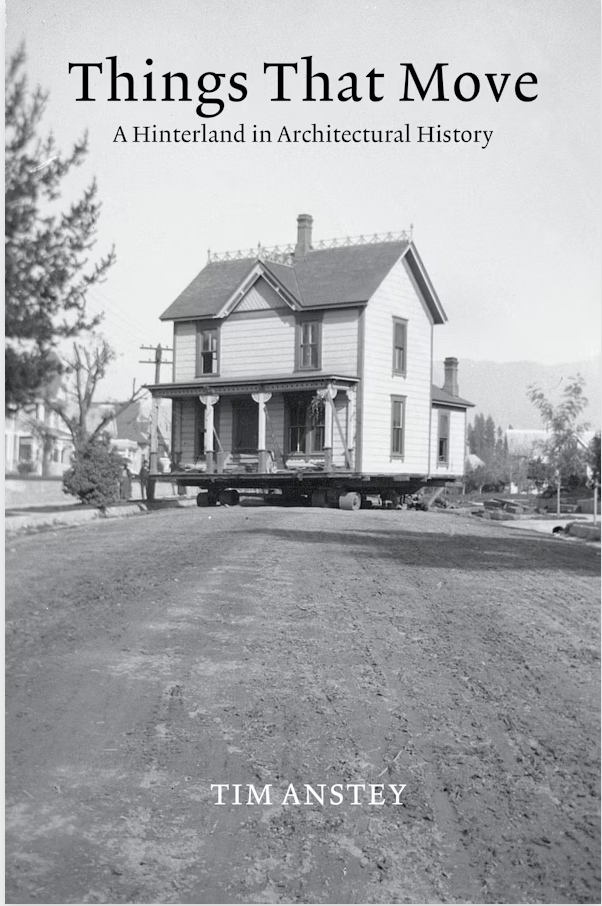
Things That Move: A Hinterland in Architectural History
We tend to think of architecture as a practice in permanence, but what if we looked instead for an architecture of transience? Things That Move: A Hinterland in Architectural History does just that: rather than assuming that architecture is, at a certain level, stationary, the book considers how architecture moves subjects (referring to its emotive potential in the experience it creates); how it moves objects (referring to how it choreographs bodies in motion); and how it is itself moved (referring to the mixture of materials, laws, affordances, and images that introduce movement into any architectural condition). The first of the three sections, “Cargoes,” highlights the mobile peripheries of architectural history through the eighteenth and nineteenth centuries. It asks what kinds of knowledge can be included in a discussion of architecture, noting the connections between discourses of the lithe and the technical, on the one hand, and those associated with the production of monumental, static compositions on the other. The second section, “Dispatches,” reinterprets early architectural theory by examining the Renaissance ideal of decorum, the nature of the architectural work, and the ways in which architects are constituted as authors. The last part of the book, “Vehicles,” considers building in terms of literal and metaphorical movement, using two cases from the twentieth century that investigate the relationship between architecture and cultural memory. Using a broadly forensic approach to connect details in otherwise disparate cases, Things That Move provides a capacious architectural account that will change the way readers understand buildings, their becoming, and their significance.
Endorsements:
“What a feast! Things That Move advances a very profound argument about what we talk about when we talk about architecture, and does so with delicious, page-turning narrative brio. A book to be at once devoured and savored.”
—Richard Wittman, Associate Professor, University of California at Santa Barbara
“Things That Move develops a completely original exploration of architecture as concerned with movement, time, and memory. It uncovers the unexplored regions of naval architecture, the architecture of obelisk transportation, or the mnemonic power of automotive vehicles, to argue that architecture is not about solidity but about flux; and about transportation in time and place. It is a fascinating read, full of new insights that will completely change perceptions of Vitruvian theory and modernism.”
—Caroline van Eck, Professor of Art History, Cambridge University
“In this groundbreaking work, Tim Anstey examines architecture through the themes of motion, movement, and relocation. He presents this story through meticulously researched historical episodes recounting the shipping of obelisks to early mass transport hubs. The subject is original, the writing superb. Anstey is a witty and provocative guide through the unfamiliar, unfixed reaches of architecture.”
—Barbara Penner, Professor of Architectural Humanities, The Bartlett School of Architecture, UCL
